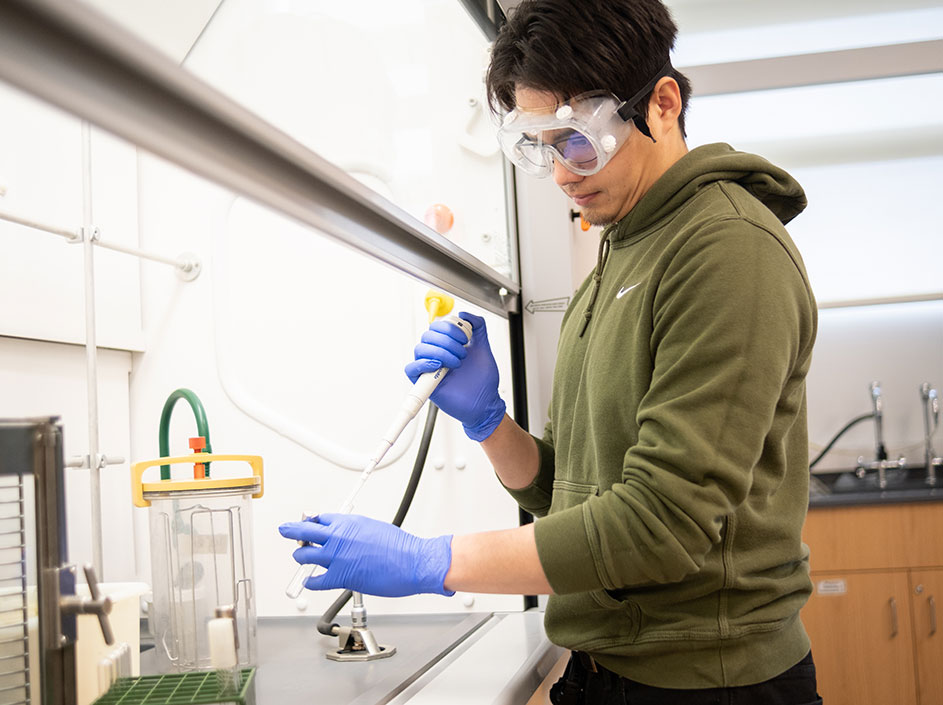Students take flight with microgravity experiments
 Published April 24, 2023
Published April 24, 2023
College of Lake County (CLC) students were given an out-of-this-world opportunity with a competition that's sending Samuel Banuelos Barrios’ experiment into outer space this December.
In a partnership with the National Center for Earth and Space Science Education (NCESSE), CLC held a course for the Student Spaceflight Experiments Program (SSEP) during the fall 2022 semester during which more than 30 students formed groups and created proposals for experiments to be conducted in space in microgravity. These students were from many different areas of study, including biology, chemistry, engineering, history, English and astronomy.
The research opportunity is provided by NCESSE and enabled through a strategic partnership with Nanoracks LLC, which is working in partnership with NASA under a Space Act Agreement as part of the utilization of the International Space Station as a National Laboratory.
“This class was an opportunity to grow and to learn more about the scientific process,” Banuelos Barrios, who is studying to earn an associate degree in biological sciences, said. “The prospect of getting the chance to design a microgravity experiment that could possibly go into space was too exciting to pass up."
The experiments will be ferried to the International Space Station where they will be conducted by the astronauts.
Along with an exciting end goal, the course gave students a real-life situation to practice writing proposals, an important function in the science field.
“Science generally is both collaborative and competitive from the grant writing aspect,” said Biology Instructor Cynthia Trombino. “Scientists have to really sharpen their proposal writing skills.”
The student groups were paired with a faculty mentor to help guide them through the process. They had nine weeks to prepare their proposal after developing a question they wanted to answer.
“A lot of students wanted to answer big questions,” said Biology Instructor Jeanine Seitz. “But they really had to narrow it down to something really specific that can be tested.”
When the proposals were completed, the groups presented their work to a committee. CLC selected three proposals that were sent to NCESSE, where one was picked to be launched and tested in space.
Banuelos Barrios’ winning proposal was "The Effects of Microgravity on Cholesterol Lowering Activity by Lactobacillus acidophilus." The idea came to him during a lecture in his chemistry course about how certain bacteria and archaea can survive in hostile environments.
“The feeling of winning was surreal,” said Banuelos Barrios. “I put a lot of time and a lot of myself into this experiment and to see the sacrifices pay off was amazing. I wouldn't trade the experience for anything, and I'm glad I took the chance to compete.”
CLC also conducted a design competition for two patches that will be flown to the International Space Station. The winners of this competition were Giselle Melchor and Milagros Velez.
About The Student Spaceflight Experiments Program
The Student Spaceflight Experiments Program is a program of the National Center for Earth and Space Science Education (NCESSE) in the U.S. and the Arthur C. Clarke Institute for Space Education internationally. It is enabled through a strategic partnership with Nanoracks, LLC, which is working with NASA under a Space Act Agreement as part of the utilization of the International Space Station as a National Laboratory.
